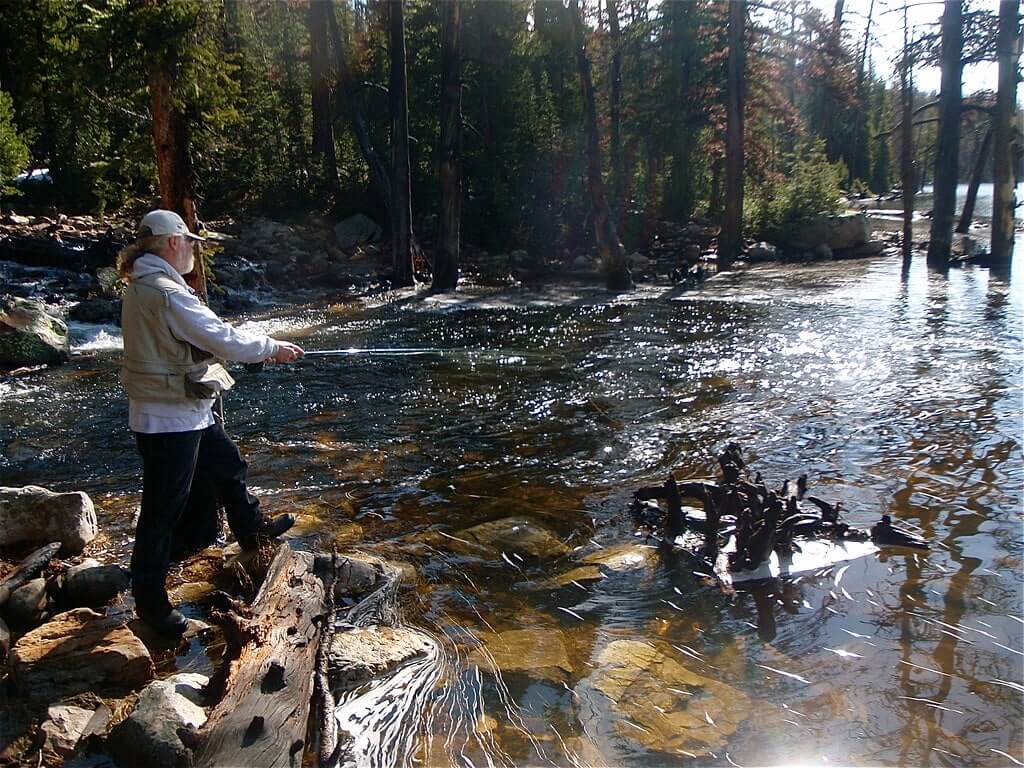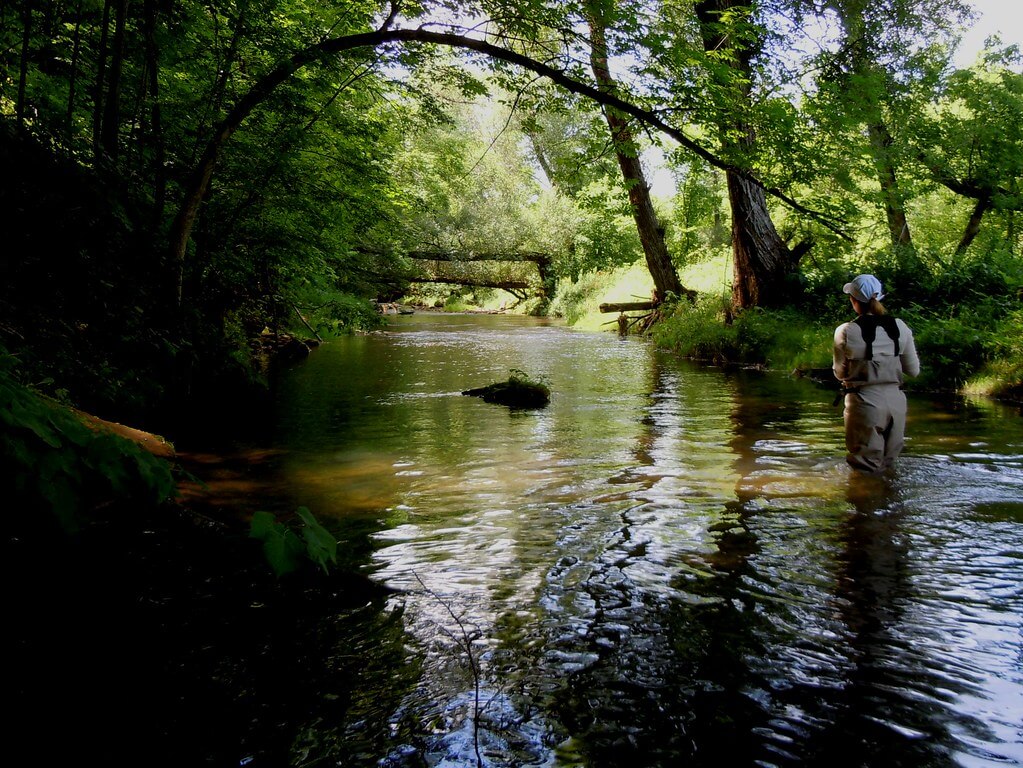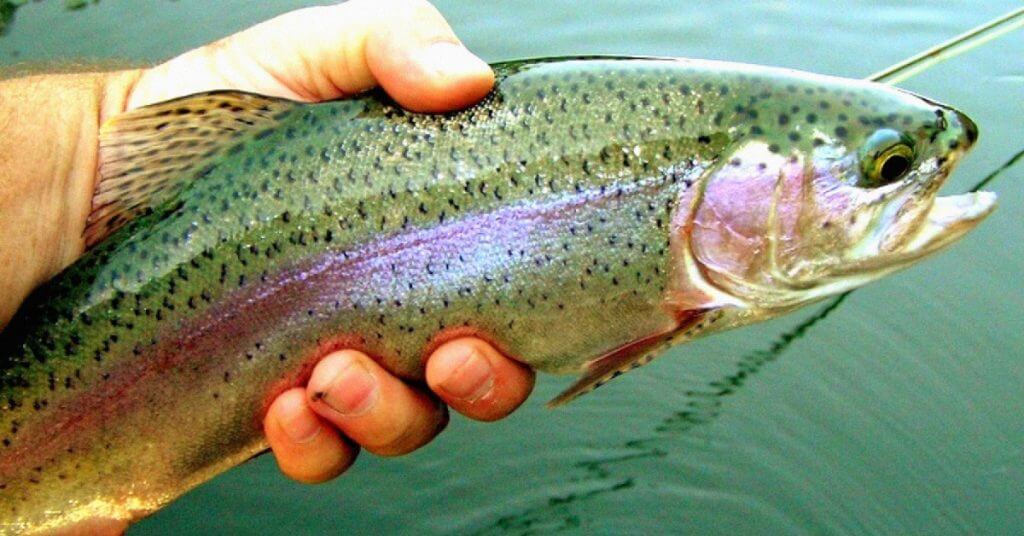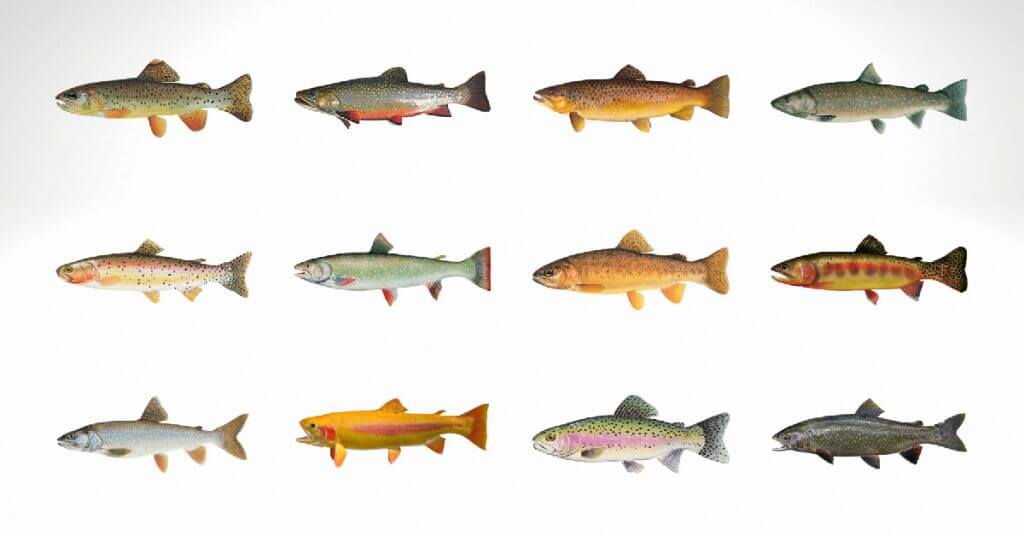Though brook trout (Salvelinus fontinalis) are often smaller fish, they are highly targeted by many anglers. This is because brook trout fishing is extremely fun no matter the size of fish you catch. I have studied and caught trout for over a decade. After all these years, I still look forward to setting the hook on a beautiful trout each time I go out trout fishing. I have condensed my years of research and times of trial and error fishing for trout into this article so you can begin to go and catch brook trout for yourself! The following trout fishing tips will help you take your brook trout angling to the next level.
Content
Where To Find Brook Trout
Brook trout are most commonly found in cold clear mountain streams and lakes in the northeastern United States. From states surrounding Vermont to as far west as Minnesota and north on into Canada.
Water temperature and water quality play a huge role in determining if these freshwater streams will support healthy trout populations along with other fish species. Brook trout have also been caught in saltwater. However, most anglers choose to fish closer to the headwaters of streams to catch brookies.
They spawn in rivers, streams, and lakes. When water temperatures are 40-50 degrees Fahrenheit spawning will take place. The spawn will happen in the fall months of September – October in most trout waters.

Stream Fishing for Trout
Small streams rarely produce big fish. The average fish length in these brook trout streams is 6 inches. There are several factors to account for the smaller fish. The first is lack of food. The abundance of food is not as great in a small stream as it will be in a lake. Another is lack of shelter.
Trout have a more difficult time hiding from predators in shallow streams. Anglers are often to blame as well, taking the larger fish home for dinner and leaving the smaller brookies.Despite not having the capacity for the larger brook trout, streams are a great place to learn to fish for trout.
Learning how to catch trout in a stream can be an awesome adventure that most people won’t get to enjoy. Most anglers don’t venture too far off the beaten path so if you go a little further up or downstream you can find low pressured fishing holes.
When stream trout fishing you should be prepared to walk a long distance, multiple miles at times, to find a spot that few anglers are willing to go to.
If hiking isn’t your thing and you don’t mind fishing next to other anglers then finding the spot with the most anglers typically means that they are catching fish. If the stream or river is deep enough kayaking up or downstream to find the best fishing spots only adds to the adventure.
However, if you’re having to drag the kayak over shallow areas for most of the stream I would recommend ditching the kayak.
While small stream trout fishing, look for boulders or logs causing a current break. Trout will use these as cover to hide from prey and predator. The deeper pools of the stream are another area where trout are found. “Deeper” is a relative term. It could mean 5- 10 feet deep in some streams while others it could mean 2-5 feet deep.
Lake and Pond Fishing for Trout
Brookies are also found in beaver ponds and lakes as long as these bodies of water stay cool enough for the trout to survive. These cold-water ponds and lakes are typically where the larger trout are found. While brook trout will get larger in lakes than they do in streams they do not grow to the size of lake trout.
Locating trout in a lake or pond may be slightly more difficult due to the depth.
The fish have more water to swim in while living in a pond or lake making them a bit more difficult to find. However, they still have predictable patterns or habits that we anglers can use to our advantage in these fisheries. Trout will hang around cover, depth changes, and will swim in schools in lakes and ponds.
So if you catch one there are likely a few more nearby.

How to Catch Brook Trout
The same tactics and techniques used to catch other trout species like rainbow trout and brown trout can be used to catch brook trout.
Fly fishing tackle, ultralight fishing tackle, waders, tackle bag, and a small net are some of the basic gear needed to begin catching brook trout. You will not need to buy both fly fishing gear and ultralight fishing tackle to catch brook trout.
Choosing which style you want to use will be your best and cheapest route. It is best to focus on one style developing the necessary skills.
After you have developed the skills of one style, learning the skills of the other style will improve your odds of more consistently catching brook trout. When brook trout fly fishing, patience is king. Getting the fly to land exactly where you want it so that it floats by the trout exactly how they want it takes lots of practice and patience.
Fly fishing is an extremely rewarding style because of the determination needed to successfully land a brook trout. When using ultralight fishing gear patience is still required. However, many baits are reaction-style lures that trigger the trout’s instinct to strike without giving them a long time to inspect the lure.
Powerbait or other dough baits incorporate smells that make the fish believe that bait is a good food source.
The Best Lures for Brook Trout
The best brook trout fishing lures are the same lures you can use in other trout waters. Simply because they have similar diets. Lures that are or mimic brook trout food are flies, jigs, spinners, prepared dough bait, and worms. Flies are going to be the most common lure for any trout species, especially, brook trout.
Because many anglers prefer to catch brook trout on a fly rod. Royal Wulff, Beadhead pheasant tail nymph, Greenie Weenie, Elk hair caddis, Wooly Bugger, Muddler Minnow, and Prince Nymph are all flies that are known to catch brook trout. The trusty hook and worm are effective on brookies as much as any other fish species.
Use a trout spinning rod and reel to get the best results. Sometimes you will want to present it weightless for a more realistic approach. At other times you will need to add a split-shot weight above the bait to improve casting distance and to get the bait down into deeper water.
Spoons and spinning lures are also great lures to use with a spinning rod and reel. However, when fishing shallow rivers and streams they tend to get snagged on the bottom. I would recommend not using spinners if you are going to be fishing shallow water, less than 1 foot deep unless you like spending most of your time hung up instead of fishing!
Brook Trout Food
Brook trout are opportunistic feeders. Unlike their hatchery-raised cousin’s wild trout feed on insects such as mayflies and insect larva, small minnows, worms, and other aquatic invertebrates for their entire lives.
While trout raised in a hatchery will learn to eat what is available native brook trout are better suited for their environment. Big brookies have been known to eat small mice and larger minnows. They will eat anything they can get their mouths on like most other game fish.
Frequently Asked Questions
What is the best bait for brook trout?
Flies, spinners, and jigs are some of the best baits for brook trout.
How do you fish for brook trout?
Brook trout fishing is similar to fishing for other trout species. Using ultralight rods and spinning reels with spinners or spoons. Using flies and flyfishing rods and reels in shallow streams.
Do brook trout taste good?
Yes. They are said to be the tastiest of all trout. I suggest tasting it for yourself. This comes down to personal preference like all foods. Some people prefer walleye and crappie to trout while other people prefer trout to walleye and crappie.
What size brook trout can you keep?
This will vary from state to state. Check your state’s regulations before heading to the water.
What colors do trout best see?
Blue.
Should you use a bobber when trout fishing?
While learning to feel the bite of a trout a bobber can be a beneficial piece of gear.
What size hooks for trout fishing?
The smaller the better. Size 8 to 14. Trout have really good eyes and they are found in clear water so they can see a hook really well.
Why are brook trout so small?
Their small size has to do with their high mortality rate and the abundance of food. Most brook trout that are caught are young and haven’t had the time to grow. They mostly live in streams where there is a limited food supply so they don’t have the necessary nutrients to grow bigger.
Do trout like sun or shade?
Trout prefer the shade. They hide from prey and predators in the shadows. Shade is especially important in shallow streams where trout are often exposed to predators.
What water temperature are trout most active in?
52- 64 degrees Fahrenheit. Trout living in water warmer than 67 degrees Fahrenheit will begin to die. They need cool, well-oxygenated, clean water to survive.
How big do brook trout get?
The record brook trout was measured to be 29 inches long and 21 inches around. However, the average brook trout measures 6-15 inches. Any brook trout 18 inches or more is considered a trophy fish in my book.
Closing Comments
Learning how to fish for brook trout only leads to amazing adventures at the lake or stream. While, like all fishing, brook trout fishing takes years or even decades to master it is well worth the investment of time and money.
Though the monster brook trout is rare, they’re always out there and you’re not going to catch them from the couch!
As always, go have an awesome brook trout fishing adventure!



